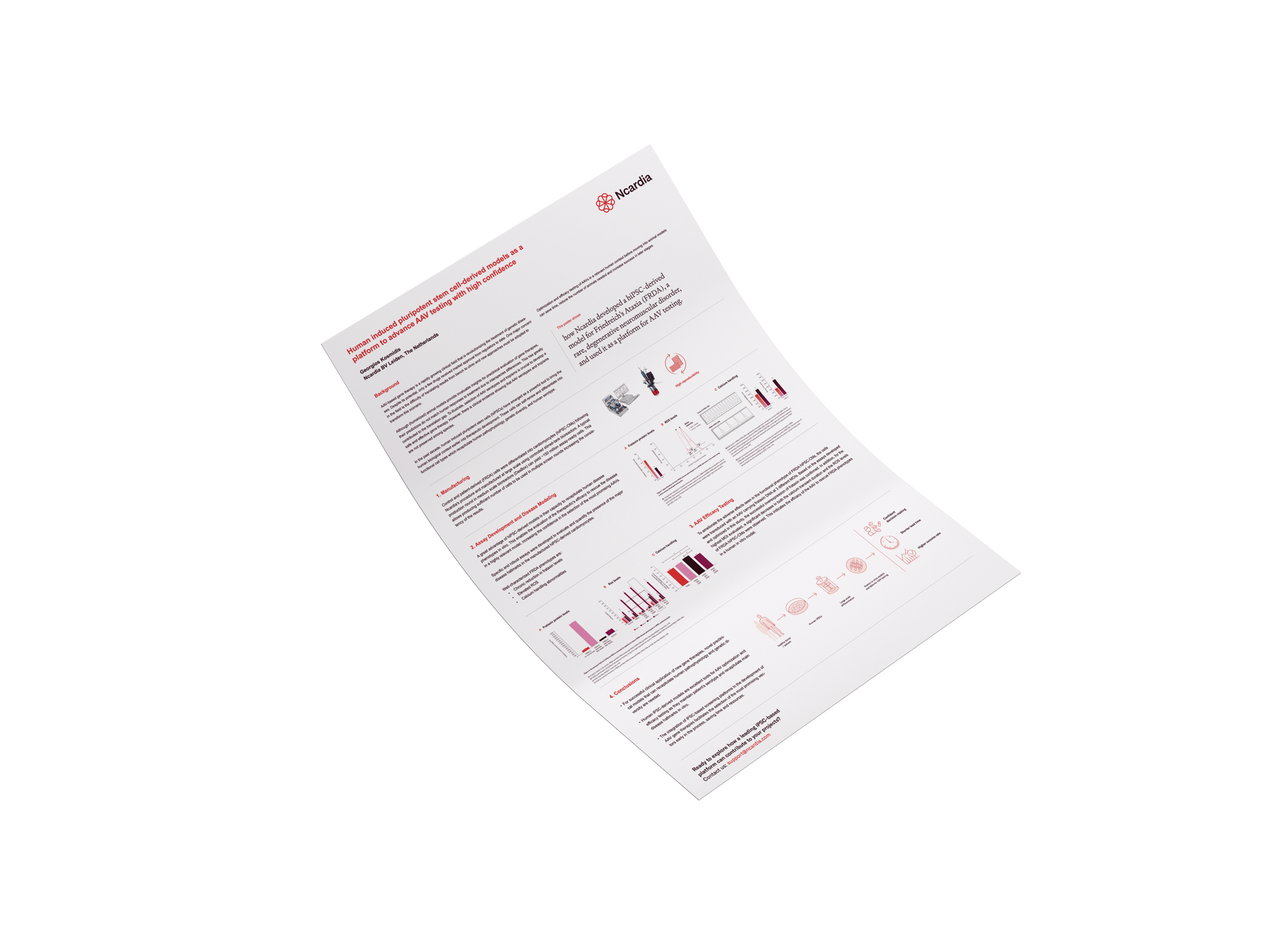AAV-based gene therapy is a rapidly growing clinical field that is revolutionizing the treatment of genetic diseases.
Despite its potential, only a few drugs received market approval from regulators to date. One major concern
in the field is the difficulty of translating results from bench to clinic and new approaches must be adopted to
transform this scenario.
Although (humanized) animal models provide invaluable insights for preclinical evaluation of gene therapies,
their predictions do not match human responses to treatment due to interspecies differences. This has greatly
contributed to the translation gap. In the past decade, human induced pluripotent stem cells (hiPSCs) have emerged as a powerful tool to bring the human biological context earlier into therapeutic development. These cells can self-renew and differentiate into functional cell types which recapitulate human pathophysiology, genetic diversity, and human serotype.
In this study, we show how we have developed a hiPSC-derived model for Friedreich's attaxia (FDRA) and specific assays to test the efficacy of AAVs. The results indicate that hiPSC derived models are excellent for AAV optimization by maintaining a patient's serotype and recapitulating human disease hallmarks.
